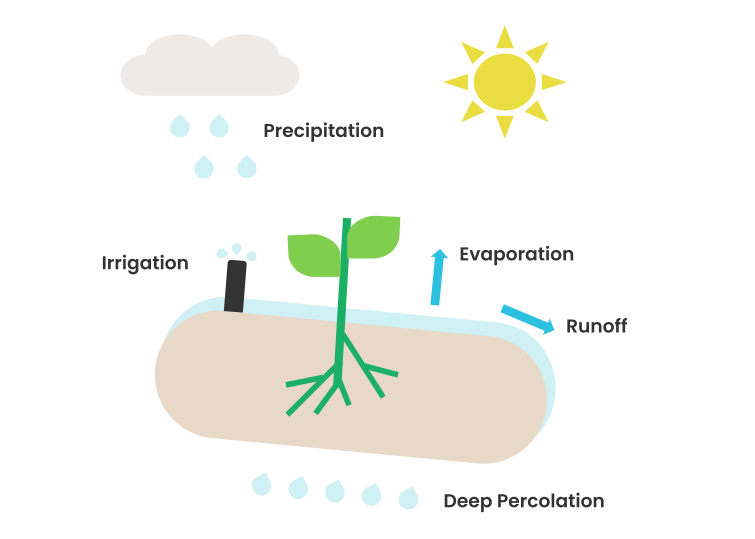Irrigation is how farmers deliver water to their crops. Studies show that about 70% of the world’s freshwater is used for agriculture, but a large portion of this water is lost before it can actually be used by the plants! Traditional irrigation systems often waste water through evaporation, runoff, and deep percolation.

Evaporation occurs when water is sprayed onto crops during the hottest parts of the day, causing it to turn into vapor before it can be absorbed by the soil. This means less water reaches the plant roots where it’s needed most.
Runoff happens when more water is applied than the soil can absorb at one time. The excess water flows off the field, carrying valuable nutrients away and sometimes even contributing to soil erosion. This wasted water doesn’t help the crops and can lead to environmental issues in nearby areas.
Deep percolation occurs when water sinks too deeply into the soil, moving past the root zone where crops can no longer access it. This is especially problematic in sandy or loose soils where water can easily move downward, away from the plants’ roots. This process not only wastes water but also can lead to the leaching of important nutrients from the soil, further diminishing crop growth.